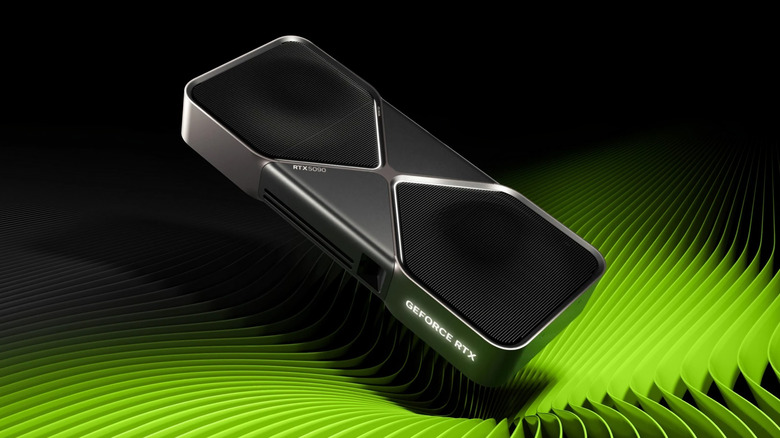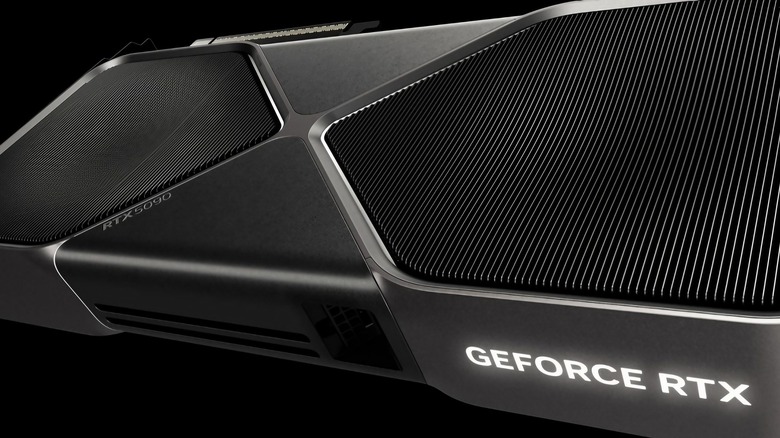How Much Power The Nvidia RTX 5090 Can Actually Pull At Its Peak
Each new generation of Nvidia's flagship graphics cards has grown increasingly more power-hungry, and the GeForce RTX 5090 is the apex of that trend. It launched in January 2025 for $1,999 and is the most powerful consumer GPU as of this publication, outperforming the previous generation's top GPUs. Understandably, it's been the talk of the town even before its launch — and not just for performance. With great performance comes great power consumption because this card is rated to draw a massive 575 watts of power.
A deep dive by the team at Overclocking found the Founders Edition card averaging a hefty 559 watts while running "Cyberpunk 2077" in 4K. But that's just the average and doesn't paint the full picture. Reviewers have found that the RTX 5090 is prone to momentary "power excursions," basically brief spikes that go well beyond the card's official rating. For instance, Igor's Lab put a Founders Edition card on their bench and measured a series of increasingly intense spikes. They found that it hits 738 W for up to 10 milliseconds and 901.1 W for moments shorter than a single millisecond.
Now, the figures may sound alarming, but they are actually normal for high-end cards. Plus, the spikes fall within the capabilities of the latest ATX 3.1 PSU specification — though they could pose a problem for older PSUs built under the ATX 2.51 standard. The issue lies with the 2.51 standard itself, which, unlike its successors, lacked any official specification for handling transient loads. An older PSU is likely to interpret these rapid power spikes as a fault, triggering the OCP and shutting down the system to protect the components. Conversely, the ATX 3.0 and 3.1 standards were specifically developed to continue working under such stress.
Taming the beast
Those peak power numbers might have you sweating about your electricity bill, but there's good news for the efficiency-minded. You can actually tame this beast without neutering it. One enthusiast on Reddit discovered that with an aggressive undervolt, they could maintain 99% of the card's stock performance while slashing power consumption by 16%, bringing the average draw to a palatable 464 watts. Even more impressively, a more moderate undervolt boosted 3DMark scores beyond factory settings. This happens because the undervolt creates thermal headroom, allowing the GPU's boost algorithm to sustain a higher average clock speed (2642 MHz vs 2502 MHz stock) for a better score.
Of course, providing the right amount of power to the GPU is critical regardless of whether you're overclocking or undervolting. To be safe, Nvidia recommends a 1000W PSU, which is a suggestion validated by Overclocking's tests that showed their system had a power peak of 856 watts. If you wish to push this further, it's wise to understand the risks and ask if it's safe to overclock a GPU and pick the right PSU. But what if you can't feed the card what it wants? The folks at Mezha.Media found that deliberately underpowering the card by using only three of the four required 8-pin connectors on its adapter created a 450W limit. This resulted in a corresponding 5% loss in performance. Starve it further with only two connectors, and the card simply refuses to boot.

